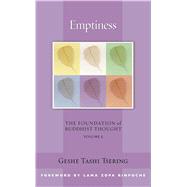
| Foreword | p. ix |
| Preface | p. xi |
| Editor's Preface | p. xv |
| The Revolution of Selflessness | p. 1 |
| The Uniqueness of the Buddha's Concept of No-Self | p. 1 |
| The Importance of Selflessness | p. 3 |
| Selflessness in the Sutras | p. 5 |
| Did the Buddha Invent Selflessness? | p. 5 |
| Understanding Reality as It Is | p. 7 |
| Selflessness in the Three Turnings of the Dharma Wheel | p. 11 |
| The Commentaries that Deal with Emptiness | p. 14 |
| The Prerequisites for Developing an Understanding of Selflessness | p. 19 |
| The Perfection of Concentration | p. 19 |
| Calm Abiding | p. 21 |
| Cultivating Calm Abiding | p. 22 |
| The Best Object of Meditation | p. 25 |
| Mindfulness and Alertness | p. 27 |
| Insight | p. 30 |
| How Insight Is Cultivated According to Tibetan Buddhism | p. 32 |
| The Concepts of Selfhood | p. 35 |
| All Things Are No-Self | p. 35 |
| Right View Is Supramundane Insight | p. 35 |
| All Things Are No-Self | p. 36 |
| Was the Prasangika View of Selflessness Taught by the Buddha? | p. 38 |
| Levels of Selfhood | p. 39 |
| The Two Types of Emptiness | p. 39 |
| Acquired and Innate Self-Grasping | p. 41 |
| The Self as an Unchanging, Unitary, and Autonomous Entity | p. 43 |
| The Self as a Self-Sufficient, Substantial Entity | p. 46 |
| The Self as an Intrinsic Entity | p. 48 |
| Identifying the Thief | p. 50 |
| Selflessness in the Four Buddhist Schools | p. 52 |
| Selflessness in the First Three Schools | p. 52 |
| Selflessness in Svatantrika Madhyamaka | p. 55 |
| The Differences Between Svatantrika and Prasangika | p. 61 |
| The Main Differences Between The Subschools of Madhyamaka | p. 61 |
| The Difference in the Line of Reasoning | p. 61 |
| The Difference in Direct Perception | p. 66 |
| The Difference in Ultimate and Conventional Levels | p. 69 |
| The Difference in the Understanding of Dependent Origination | p. 70 |
| The Difference in Identifying the Two Obscurations | p. 71 |
| Prasangika's Unique Presentation of Emptiness | p. 77 |
| The Object of Negation | p. 77 |
| Empty of What? | p. 77 |
| Refuting the Referent Object | p. 81 |
| The Object of Ultimate Analysis | p. 82 |
| What Is Intrinsic Nature? | p. 85 |
| Some Clarification of Innate Self-Grasping | p. 88 |
| Establishing Emptiness | p. 91 |
| Lines of Reasoning | p. 91 |
| The Seven-Point Analysis | p. 93 |
| The Chariot Cannot Be Identical with Its Parts | p. 95 |
| The Self Cannot Be Identical with the Aggregates | p. 95 |
| The Chariot Cannot Be Posited as Something Separate from Its Parts | p. 96 |
| The Self Cannot Be Posited as Something Separate from the Aggregates | p. 97 |
| The Parts of the Chariot Do Not Exist Intrinsically as the Base of the Chariot | p. 98 |
| The Aggregates Do Not Exist Intrinsically as a Base of the Self | p. 98 |
| The Chariot Does Not Exist Intrinsically Dependent on Its Parts | p. 98 |
| The Self Does Not Exist Intrinsically Dependent on the Aggregates | p. 99 |
| The Chariot Does Not Possess Its Parts | p. 99 |
| The Self Does Not Possess the Aggregates in the Sense of Some Kind of Inherent Possession | p. 99 |
| The Chariot Is Not Identical with the Collection of Its Parts | p. 100 |
| The Collection of the Aggregates Cannot be Posited as the Self | p. 100 |
| The Chariot Is Not Its Shape | p. 100 |
| The Shape or Configuration of the Aggregates Cannot be Posited as the Self | p. 101 |
| Refuting the Four Possibilities of Production | p. 102 |
| The King of Reasons | p. 105 |
| How The Person and Phenomena Appear Like an Illusion | p. 107 |
| Emptiness and Dependent Arising | p. 109 |
| The Three Levels of Dependent Arising | p. 109 |
| The Impact of Dependent Arising | p. 109 |
| The Three Levels of Dependent Arising | p. 110 |
| Causal Dependency | p. 111 |
| Mutual Dependency | p. 113 |
| Merely-Labeled Dependency | p. 116 |
| Emptiness and Dependent Arising | p. 118 |
| The Merging of Emptiness and Dependent Arising | p. 121 |
| Conclusion | p. 127 |
| Appendix | p. 131 |
| Glossary | p. 135 |
| Bibliography | p. 143 |
| Notes | p. 145 |
| Index | p. 149 |
| About the Authors | p. 157 |
| The Foundation of Buddhist Thought | p. 159 |
| Table of Contents provided by Ingram. All Rights Reserved. |
The New copy of this book will include any supplemental materials advertised. Please check the title of the book to determine if it should include any access cards, study guides, lab manuals, CDs, etc.
The Used, Rental and eBook copies of this book are not guaranteed to include any supplemental materials. Typically, only the book itself is included. This is true even if the title states it includes any access cards, study guides, lab manuals, CDs, etc.